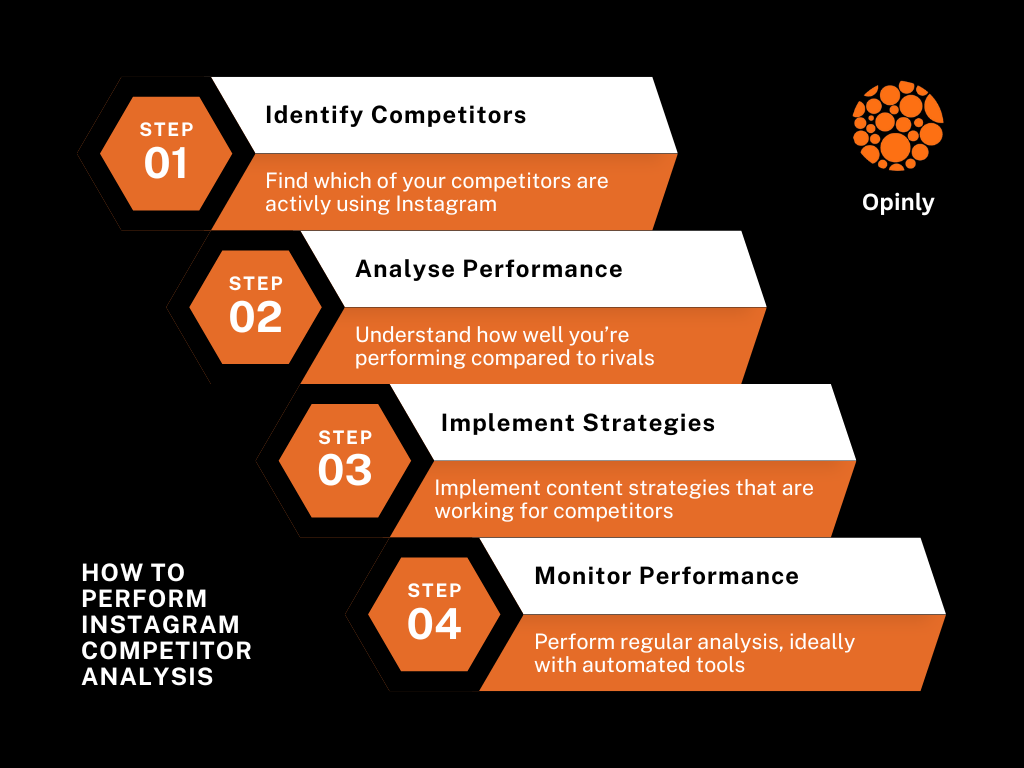10 Benefits of Product Comparison Tools for Businesses
Know 10 benefits of product comparison tools to boost sales, enhance customer satisfaction, compare products, save time, and gain a comprehensive edge.

In today's fast-paced market, businesses are constantly seeking ways to stand out and attract more customers. The competition is fierce, and consumers are more informed and selective than ever before.
To capture their attention and drive sales, businesses need to provide exceptional value and a seamless shopping experience. One effective strategy to achieve this is by using product comparison tools.
These tools are designed to simplify the decision-making process for consumers by offering side-by-side comparisons of various products.
Product comparison tools utilize advanced AI tools to generate users with insightful analysis and recommendations, empowering consumers to make informed decisions based on comprehensive evaluations of various products' features, prices, and customer reviews.
Product comparison tools not only help consumers make informed decisions by providing detailed information on features, prices, and reviews, but they also offer numerous advantages for businesses.
They enhance the overall customer experience, which in turn builds trust and loyalty. The tool helps you compare products effectively. Moreover, these tools can significantly boost sales by reducing cart abandonment and increasing conversion rates.
Businesses can gain valuable market insights, optimize their inventory management, and improve their SEO performance with the data collected from these tools.
10 Benefits of Product Comparison Tools

1. Enhanced Customer Shopping Experience
Enhanced customer experience and informed decision-making are achieved through product comparison tools that empower customers by providing detailed information on various products, building trust through transparency, and offering easy access to aggregated data from multiple sources in a user-friendly format, allowing customers to efficiently compare features, prices, and reviews, ultimately saving time and effort, increasing satisfaction, and fostering brand loyalty.
A product comparison tool helps customers to make well-informed choices with confidence, reducing the risk of buyer's remorse and enhancing overall shopping convenience.
Product Comparison Tools use information from various sources and present it on user-friendly product pages, helping consumers to conveniently compare multiple products side by side in one place.
2. Increased Sales and Conversion Rates
When customers can compare products directly on your website, they are more likely to stay longer and interact with your content. This increased engagement can lead to higher conversion rates, as customers feel more informed and confident in their purchasing decisions.
Providing clear product comparisons helps customers choose the best product for their needs, reducing the likelihood of cart abandonment. When customers understand the differences and benefits of each product, they are less likely to leave their shopping cart due to indecision or confusion about product features.
By making it easier for customers to compare products, you enhance their shopping experience, keep them engaged, and guide them towards completing their purchase, ultimately boosting sales and conversion rates.
3. Competitive Product Information Advantage
By using product comparison tools, businesses gain valuable insights into market trends and customer preferences, which can guide product development and marketing strategies.
This data helps in creating products that better meet customer needs and tailoring marketing efforts for maximum impact.
Product Comparison Tools help consumers assess the functionality of electronics by providing detailed comparisons of features, specifications, and performance metrics, allowing them to make well-informed decisions based on their specific needs and preferences.
Additionally, offering a comprehensive comparison tool sets businesses apart from competitors who don't provide the same level of service.
This added value not only attracts more customers but also fosters customer loyalty, as shoppers appreciate the transparency and ease of making informed decisions. Ultimately, these advantages lead to increased customer satisfaction, stronger brand reputation, and sustained business growth.
4. Efficient Ecommerce Inventory Management
Product comparison tools can help businesses forecast demand more accurately by analyzing customer preferences and purchasing patterns.
By collecting and examining data on which products customers compare most frequently and which features they prioritize, businesses can predict future demand with greater precision.
This leads to better inventory management, as businesses can adjust their stock levels to meet anticipated demand, reducing the risk of stockouts or overstock situations.
Understanding which features and products are most popular among customers allows businesses to optimize their product assortment.
Product comparison tools provide insights into customer preferences, enabling businesses to identify the most sought-after products and ensure they are always in stock.
5. Improved SEO Performance
Product comparison tools can attract more visitors to your website by showing up in search results for comparison queries.
When potential customers search for product comparisons, your website's tools can appear, increasing your visibility. This boost in visibility brings more traffic to your site, which means more potential customers exploring your offerings.
Websites that provide detailed and helpful comparison tools are often rewarded by search engines with higher rankings. When search engines recognize that your site offers valuable content, they are more likely to rank it higher in search results.
This improved SEO performance leads to sustained traffic growth over time, as more people find your site through organic searches.
6. Enhanced Customer Loyalty
Providing transparent and comprehensive product comparisons builds trust with customers. When customers feel they can rely on your website for accurate information, they are more likely to return for future purchases.
Happy customers are loyal customers, and providing comprehensive product information can contribute to their satisfaction. By making the purchasing process easier and more informative, product comparison tools significantly enhance customer satisfaction.
When customers have access to clear, side-by-side comparisons of products, they can make informed choices without the hassle. This positive experience makes them more likely to come back to your site, as they associate your brand with convenience and reliability.
7. Streamlined Website and Marketing Efforts
With insights gained from comparison tools, businesses can craft more targeted marketing campaigns.
Product Comparison Tools help users to identify high-quality products by providing comprehensive evaluations and comparisons based on factors such as durability, reliability, and customer satisfaction, empowering consumers to make informed purchasing decisions.
By understanding the specific needs and preferences of their customers, businesses can create ads and promotions that speak directly to what customers are looking for. This targeted approach makes marketing efforts more effective, as it addresses the interests and desires of the audience.
Product comparison tools can also provide personalized product recommendations. By analyzing customer preferences and behaviors, these tools suggest products that are most likely to appeal to each individual customer.
This personalization increases the chances of making a sale, as customers are shown items that match their tastes and needs.
8. Cost Savings
When customers make informed decisions, they are less likely to return products. This means fewer returns for your business to handle, which can save you a lot of money. Detailed product information can prevent purchase errors.
By providing customers with all the information they need to choose the right product, you can significantly reduce the costs associated with processing and restocking returned items.
Understanding which products are most popular allows businesses to allocate their resources more efficiently.
By focusing on high-demand items, you can ensure that your inventory matches customer preferences, reducing the chances of overstocking less popular products. Shopify integration might help manage inventory effectively. This efficient resource allocation not only saves money but also minimizes waste, as you're more likely to sell what you have in stock.
9. Better Customer Service
Clear and detailed product comparisons help customers understand product features and differences, which can significantly reduce the number of support queries.
When customers have all the information they need at their fingertips, they're less likely to contact customer support with questions. This frees up your support team to focus on more complex issues and provide better assistance where it's really needed.
Businesses can use the data from comparison tools to identify and address potential issues with their products before they become major problems.
By analyzing customer feedback and preferences, you can spot trends and areas where improvements are needed. This proactive approach not only enhances the quality of your products but also shows customers that you are attentive to their needs and concerns.
10. Increased Brand Credibility
Offering an effective product comparison tool positions your business as an authority in the market. When customers see that your website provides comprehensive and accurate comparisons, they recognize your expertise and reliability.
This authoritative presence makes them more likely to trust your brand for their purchasing decisions and view your business as a go-to source for valuable information. Over time, this trust solidifies your position as a leader in your industry.
Satisfied customers who benefit from your product comparison tools are likely to leave positive reviews and recommend your business to others.
These glowing reviews and personal recommendations serve as powerful endorsements that can significantly enhance your brand’s credibility.
Word-of-mouth marketing, driven by happy customers, spreads your reputation organically and attracts new customers who are more inclined to trust a brand that comes highly recommended by their peers.
Unique Features of Opinly AI's Product Comparison Tool

1. Real-Time Comparison Table Updates
Opinly AI’s product comparison tool is designed to keep users informed with the most current information available. The real-time updates feature continuously monitors product availability, prices, and new features across various online platforms and stores, providing comprehensive product details.
This means that users can trust the information they see to be accurate and up-to-date, eliminating the risk of relying on outdated data.
Whether it's a sudden price drop, a product going out of stock, or the release of a new feature, Opinly AI ensures that users are immediately aware of these changes.
This dynamic updating process is particularly beneficial for users who are making time-sensitive purchasing decisions, as it allows them to act quickly and make informed choices based on the latest market conditions.
2. Select Personalized Recommendations
The Opinly AI product comparison tool leverages advanced artificial intelligence algorithms to provide personalized product recommendations tailored to each user's unique preferences and past behavior.
By analyzing a user's browsing history, purchase patterns, and specific preferences, the tool can identify trends and predict which products are most likely to meet their needs using advanced free AI technology.
For instance, if a user frequently searches for eco-friendly products or has a history of purchasing items within a specific price range, the AI will prioritize recommendations that align with these criteria.
This personalization extends beyond just basic preferences; the tool can also consider more nuanced factors, such as preferred brands, desired features, and user reviews, to refine its suggestions further.
3. Intuitive App Interfaces
Opinly AI’s product comparison tool is designed with a user-friendly and intuitive interface, making the comparison process straightforward and enjoyable.
Product Comparison Tools streamline the shopping experience by allowing users to compare products with just one click, saving them time and effort while ensuring they have all the necessary information to make an informed purchase decision.
The interface is crafted to be visually appealing and easy to navigate, ensuring that users, regardless of their technical expertise, can effortlessly find and compare different products using this shopping tool.
Product Comparison Tools serve as effective finders, helping users locate the best products for their needs by aggregating and analyzing information from multiple sources to provide comprehensive comparisons in one convenient platform.
The design features clear, concise menus and organized categories, allowing users to quickly access the information they need.
Interactive elements such as drag-and-drop comparisons, filter options, and visual charts enhance the user experience by making it simple to compare various aspects of products side-by-side.
This means users can easily adjust their search criteria, sort products by different attributes, and view detailed specifications without feeling overwhelmed by information.
4. Visual Comparisons
Opinly AI’s product comparison tool excels in providing detailed visual comparisons, including charts, graphs, and tables, to help users easily understand and differentiate between products.
This feature transforms complex data into easy-to-digest visual formats, allowing users to quickly grasp key differences and make informed decisions with the help of free AI.
Product Comparison Tools offer users a convenient overview of various products, allowing them to quickly assess key features, prices, and reviews to make informed decisions tailored to their needs.
The visual comparisons feature also includes interactive elements that enhance user engagement. For instance, hovering over a graph point might reveal additional details about a product, such as customer reviews or specific features.
Users can also customize the data they see by selecting different comparison criteria or adjusting filters to narrow down their choices.
5. Comprehensive Data Integration
Opinly AI aggregates user reviews from various online platforms to capture real-world experiences and feedback, helping it function as a powerful shopping tool. By analyzing these reviews, the tool presents a balanced view of each product’s performance, reliability, and user satisfaction.
This user-generated content provides valuable insights into the pros and cons of each product, helping potential buyers understand how a product performs in everyday use.
To complement user reviews, the tool also incorporates expert opinions and reviews from trusted sources such as tech blogs, industry publications, and review sites, providing thorough product information.
Expert reviews often include in-depth analyses, performance benchmarks, and professional assessments that add an additional layer of credibility and depth to the comparison.
This expert input helps users understand the technical nuances and advanced features of products, which might not be immediately apparent from user reviews alone.
Conclusion
Product comparison tools bring numerous benefits to businesses, making them essential in today’s competitive market. They improve customer experience and help shoppers make informed decisions, building trust and loyalty. These tools also drive more traffic to your website and boost search rankings, enhancing your SEO performance and ensuring long-term growth.
With better insights from these tools, businesses can manage inventory efficiently, target marketing efforts more effectively, and save costs. They also improve customer service by reducing support queries and allowing proactive problem-solving. Offering detailed product comparisons helps establish your business as an authority in the market, boosting your brand's credibility and reputation.
For the best results, choose product comparison tools from Opinly AI. Our advanced features and user-friendly design ensure you get the most out of your comparison efforts, helping you to stand out in the market and achieve your business goals.
Try Opinly AI today and see the difference it can make for your business!
Frequently Asked Questions
1. What is a product comparison tool?
A product comparison tool is an online feature that allows users to evaluate multiple products side-by-side. It provides detailed information on various aspects such as features, prices, reviews, and specifications, enabling customers to make informed purchasing decisions.
This tool helps you compare products efficiently. These tools are designed to simplify the decision-making process by presenting all relevant data in an easy-to-understand format, making it a valuable shopping tool. Product comparison tools generate detailed comparison tables, enabling users to easily visualize the key features, prices, and ratings of multiple products side by side for quick and informed decision-making.
2. How do you compare product offerings?
Comparing product offerings involves analyzing key attributes of each product, such as price, features, user reviews, and brand reputation. Using a product comparison tool, you can select the products you want to compare and view a side-by-side comparison of their specifications and features. You can read user reviews and expert opinions to gather more insights about product details.
Additionally, you can assess the value for money based on the price and features, helping you identify which product best meets your specific needs and preferences. Product comparison tools have become essential for modern ecommerce app or platforms, offering shoppers a convenient way to compare prices, features, and reviews across multiple products before making a purchase decision.
3. How to do a product comparison report?
Creating a product comparison report involves several steps. First, identify the criteria by determining the key features and specifications you want to compare, such as price, performance, user reviews, and unique features. Next, gather data from reliable sources like manufacturer websites, user reviews, expert opinions, and product specifications to provide detailed product information.
Then, use a template, such as a spreadsheet or a dedicated product comparison tool, to organize the data, including columns for each criterion and rows for each product. After that, analyze the data by comparing the products based on the criteria, highlighting the strengths and weaknesses of each product.
Present your findings in a clear and concise manner, emphasizing which product is the best overall and which ones excel in specific areas. Finally, include visuals such as charts, graphs, or tables to make the report more visual and easier to understand. Coora AI can assist in generating these visuals.
4. How do product comparison tools help in inventory management?
Product comparison tools assist in inventory management in several ways. First, they aid in demand forecasting by analyzing customer preferences and purchasing patterns, which helps businesses predict demand more accurately.
Second, these tools help in stock optimization by identifying the most popular products, ensuring that high-demand items are always in stock and reducing the risk of stockouts or overstock situations.
Third, they enable efficient allocation of resources, allowing businesses to focus on products that are likely to sell faster based on comparison data. Lastly, by helping customers make informed decisions, product comparison tools reduce the likelihood of returns, leading to better inventory turnover.
5. Why are AI product comparison tools important?
AI product comparison tools are important for several reasons. They enhance accuracy by analyzing vast amounts of data quickly and precisely, offering more accurate comparisons. These tools provide personalized recommendations, tailoring suggestions based on individual user preferences and past behavior.
They offer real-time updates on product availability, price changes, and new features, ensuring users have the most current information. AI also improves the overall user experience with intuitive interfaces and intelligent search capabilities, making the comparison process smoother and more efficient.
Lastly, businesses can use AI to gain deeper insights into market trends and consumer behavior, aiding in strategic decision-making.
In Product Comparison Tools, AI models analyze vast amounts of data to create accurate and insightful comparisons between products, providing users with valuable information to facilitate their decision-making process.




